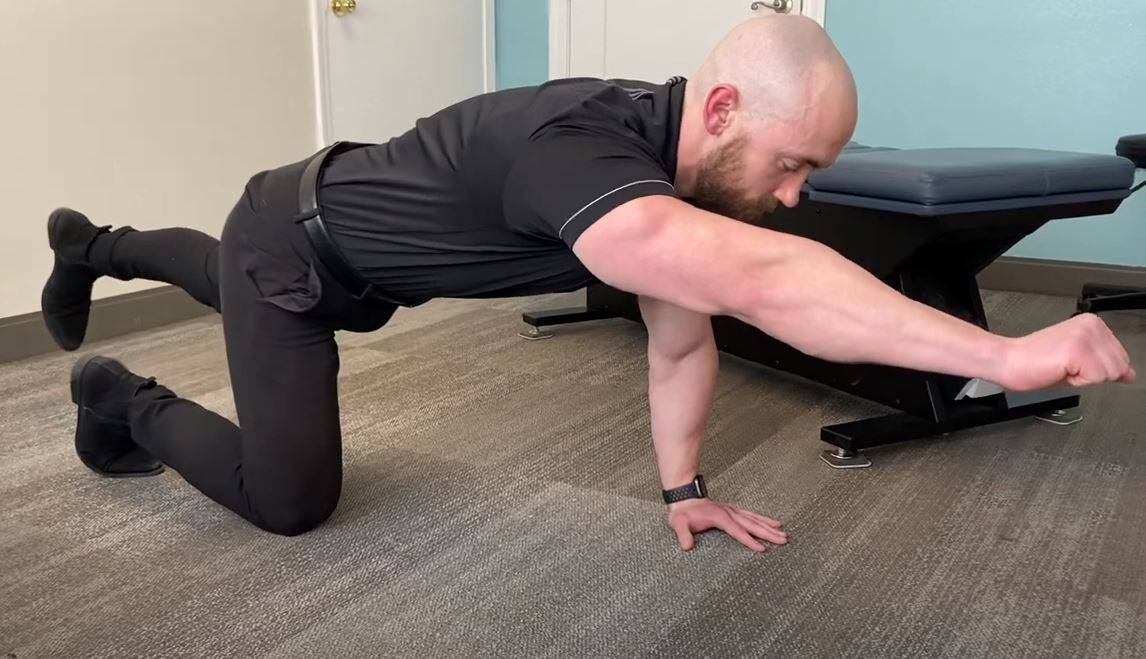Pectoral Muscle Stretches and Exercises for Increased Range of Motion and Better Posture
At Northern Nevada Chiropractic, we see a lot of patients who suffer from a rounding of the shoulders. This is largely due to computer work or sitting at a desk the majority of the day where patients are reaching forward and often unconsciously hunching their shoulders. This repetitive motion causes poor posture which leads to a weak and tight upper back and compressed pectoral muscles.
Some of the best things you can do to combat these tight pectoral muscles and rounding of the back and shoulders are regular stretches and posture training.
Banded Row Exercise
Dr. Welch recommends doing a banded row a few times a day when you take a break from your desk. By creating tension on the band and pulling back, squeezing your shoulder blades, you will start to build muscle in the upper back. Strengthening those muscles will pull your chest back and alleviate a hunched posture.
Pectoral Stretches
Stretching the pectoral muscles on a regular basis is also crucial to creating space in the chest and preventing those muscles from pulling your shoulders forward. Doing a pectoral stretch for 30 seconds, a few times a day can really help prevent a tight chest, and all you need to do the stretch is a corner of a room and your body weight. A way to build this into a habit, is to do the pectoral stretch every time you leave your desk to use the restroom.
Shoulder Exercises
Additionally, Dr. LoConte recommends the Crossover Symmetry Shoulder Package to strengthen shoulders and the upper back, improving performance while reducing pain. This system comes with three different exercise tracks depending on your level of fitness and how much rehabilitation your shoulders need. Here is what one patient had to say about the Crossover system.
“I lift heavy and have always had issues with shoulder injuries and tight pecs,” patient, Brett Porter said. “Dr. LoConte recommended the Crossover system to me and it has helped tremendously! I use the Activation track primarily and I have seen a huge improvement in my range of motion and my shoulder injuries are mostly healed.”
Activating the upper back and shoulders, while stretching the pectorals will help improve your posture significantly. Posture correction is one of the simplest things you can do to help relieve back pain and imbalanced muscles. Good posture can also eliminate headaches, neck pain, and help the overall flow of the nervous system. The doctors at NNC recommend checking your posture at least once a month to self-assess where you may need improvement. Handy tools that we use in posture correction include the Upright Go, which tracks your posture, your posture improvement, and gives you a subtle vibration to remind you to correct your posture when you are slouching.
Sleeping Habits and a Better (or No) Pillow
Lastly, you may want to look at your sleeping, specifically your pillow. For patients with significant pectoral immobility or restricted mobility, Dr. LoConte recommends trying to sleep without a pillow so that the neck is unrestricted and the shoulders have full range to stretch and relax when you are on your back. It takes some getting used to the first few nights, but the results can be very beneficial.
Dr. Welch often recommends an orthotic pillow by Foot Levelers. Patients are custom measured for their pillow, much like you would be measured for orthotics in your shoe. The custom pillow has been shown to relieve neck and shoulder problems as well as tight muscles or sprains and strains in the neck, shoulders and upper back.
For questions about pectoral stretches you can do at home, or for a complete assessment of your posture or shoulder issues, contact us to make an appointment.





